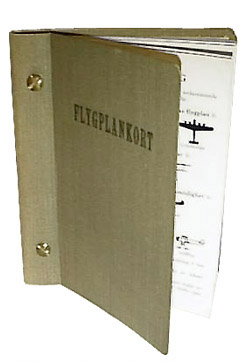| Flygplankort - Aircraft Identification Cards | ||
|
“Flygplanskort”
– in English ”Aircraft Identification Cards” has been publicised in
many editions, the first probably in 1925.
The first editions were printed on separate cards of thick paper. Later
they were collected in binders. In 1950,
Flygplanskort was printed on oblong, folded papers – “the accordions”.
The edition consisted of five parts – four describing the aircraft of
the NATO and of the Warsaw Pact countries and one of Swedish aircraft.
In 1978,
Flygplankort was edited as a book of small size (about 10 x 15 cm) with photos and three-plane
profiles. A new Flygplankort, enlarged and larger in size (21 x 15 cm) was
edited in 1987. Flygplankort 1999 is a real encyclopedia of modern military and
civil aircraft of nearly 400 pages and with photos in colour. It is sold
to the public by Flygvapenmuseum (among others). The
purpose of the Flygplankort need not to be explained. During the years
before WWII, an air defence warning system was built up. Sweden was
divided into Air Defence Areas (luftbevakningsområden). Observing
stations were arranged along the coasts and frontiers and in lines within
the country. An organization of voluntary air observers was also
established within the defence. Flygplanskort
was an important part in the training of the personnel. After
the outbreak of WWII, the organization of optical air defence observation
posts grew quickly. Observation towers, mainly manned by young women (often
called “tornsvalor” in Swedish meaning “swifts”), were built all
over the country. Some of these towers are still standing pointing into
the air as monuments of old days. The
first radar plants in the Swedish air defence were procured after the end
of WWII. On the
following pages, Flygplankort from the late thirties or early forties
reproduced. They are from the collection of Lars Sundin, Stockholm. |
 |
|
|
|
First page -> | |